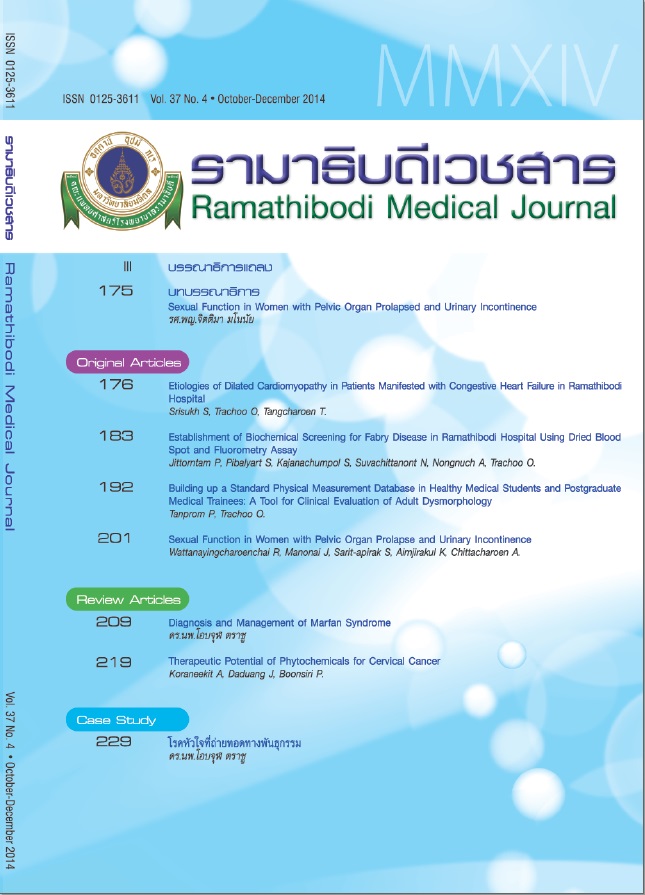Sexual Function in Women With Pelvic Organ Prolapsed and Urinary Incontinence
Keywords:
Pelvic floor disordersAbstract
Pelvic floor disorders (PFDs), including urinary incontinence (UI), pelvic organ prolapse (POP), and fecal incontinence (FI), are common and affect up to one third of premenopausal and 45% of postmenopausal women. Their incidence increases dramatically with age and menopause. Problems with sexual functioninh are common among women with PFDs. Women with pelvic organ prolapse report an impact of their condition on sexual function. Women with urinary incontinence, both stress and urgency urinary incontinence, also typically report impired sexual function compared to those without urinary incontinence. However, data regarding the effects of PFDs on women's sexual function is limited and conflicted especially in Thai women. The cultural differences, degree of concern, research methodology and definitions used for clarifying sexual dysfunction might explain this.
References
Mannella P, Palla G, Bellini M, Simoncinia T. The female pelvic floor through midlife and aging. Maturitas. 2013;76:230-234.
Fashokun TB, Harvie HS, Schimpf MO, et al. Society of gynecologic surgeons 'fellows' pelvic network. Sexual activity and function in women with and without pelvic floor disorders. Int Urogynecol J. 2013;24:91-97.













